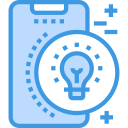Performance, Offline Use, and Data Sync
Adopt light client approaches where possible, and back them with prioritized RPC endpoints. Retry smartly, detect chain forks, and surface sync status clearly. Users should always know whether their view is fresh, stale, or pending confirmation without digging through settings.
Performance, Offline Use, and Data Sync
Use normalized caches, SQLite, or secure storage to persist essential state. Tag cached data with block numbers, reconcile on resume, and handle reorgs gracefully. Always make optimistic updates reversible, and explain confirmations so users understand why balances sometimes jump unexpectedly.





